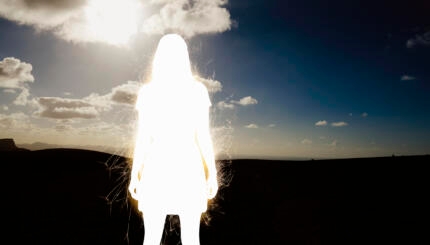As this summer, and this Jewish year wind down, I’m completing the painting and writing for my fourth illuminated book Kabbalat Shabbat: the Grand Unification, which presents illuminated paintings and commentaries on the anthology of synagogue and dinner-table prayers, blessings, songs and traditions with which we welcome the Shabbat bride.
The experience of painting one of these poems in particular, A Powerful Woman (Aishet Hayil, often translated as A Woman of Valor, Proverbs 31:10-31), has become a pivotal moment for me, completely fusing its sublime mystical interpretation with my personal life. You see my paintings for it above. The Kabbalists who compiled the Kabbalat Shabbat customs in 16th-century Safed, followers of Rabbi Isaac Luria, passionately sought to bring divine Wisdom into our world, and described Wisdom as a woman. Hence the concepts of the Shabbat Bride or Queen, a personification of Wisdom. Wisdom included much more than the moral, psychological, and intellectual meanings that we attach to the word nowadays. Throughout the Bible from Exodus on, wisdom also included what we now call skills — skill at making things, skill at management, skill at running an efficient home — and the Bible considered them divine gifts. The ideal woman — homemaker, skillful property manager, kind and wise mother and wife — idealized in these closing verses of Proverbs represents this Powerful Woman. In Kabbalah she symbolizes the Shekhinah, the feminine, most accessible emanation of God, whom we receive in our homes on Shabbat, and who rewards us with the treasured “additional soul” to refresh us during the sacred hours.
No one in my life has embodied the Powerful Woman as much as my grandmother, Rebbetzin Bessie Pakman Swift. Passionately in love with her husband, Rabbi Harris Swift, and married at 17, quite apart from her loving care of four very active children (of whom my mother was the youngest, and sole daughter), she had her own active career. She was a rebbetzin of major British and South African synagogues, a leader of both Jewish and secular women’s groups across Great Britain for four decades surrounding Word War II, and a transitional foster mother to streams of refugee children. We adored one another; she effectively raised me during my earliest years, and we felt like flip sides of the same soul until her passing at 87. She modeled the complete Jewish homemaker who was also thoroughly out in the wider world, taught me to sew, and took the greatest pride in my earliest artistic efforts. We exchanged countless letters while separated by the Atlantic, and she helped her daughter set our family straight in the wake of divorce. Bobba was our oak….and the night of her passing, the only thing I could do was to spend the night in my studio creating a picture of this same passage from Proverbs, Aishet Hayil, about her for my mother.
So, of course I returned to the oak tree image to express the qualities of A Powerful Woman. This tree’s roots and branches suggest the balance of strengths in the wise person. Ethics of the Fathers, Pirkei Avot, compares the wise person to a tree that has not only a leafy canopy, but more importantly strong roots that can anchor it in the face of harsh winds, and can nourish it in times of drought. The tree’s canopy allows light through, but shelters the doves and squirrels nested within it. Its strong roots protect the grasses and lilies growing among them, as well as a gazelle — itself a symbol of the love between God and Israel. Rising from the oak’s roots toward the canopy, roses reveal beauty and humility and grapes speak of wisdom and sanctification. In a famous midrash a stalk of fragrant pink lilies, alone in a hopelessly neglected and overgrown orchard, symbolizes the value of the Ten Commandments in an otherwise corrupt and ruined human world. All the symbolism, which I have sketched only briefly here, will be laid out thoroughly in the commentaries in the book. So in the end, nearly twenty-five years since the passing of the woman who inspired these paintings, oak trees and powerful women, wisdom and memories converge and unify as I celebrate the Shekhinah.
You can find more information about Kabbalat Shabbat: the Grand Unification at www.dbandart.com. I’d love to hear your own story about the Powerful Woman in your life—drop me a note!
Kabbalah
Pronounced: kah-bah-LAH, sometimes kuh-BAHL-uh, Origin: Hebrew, Jewish mysticism.
Shabbat
Pronounced: shuh-BAHT or shah-BAHT, Origin: Hebrew, the Sabbath, from sundown Friday to sundown Saturday.


